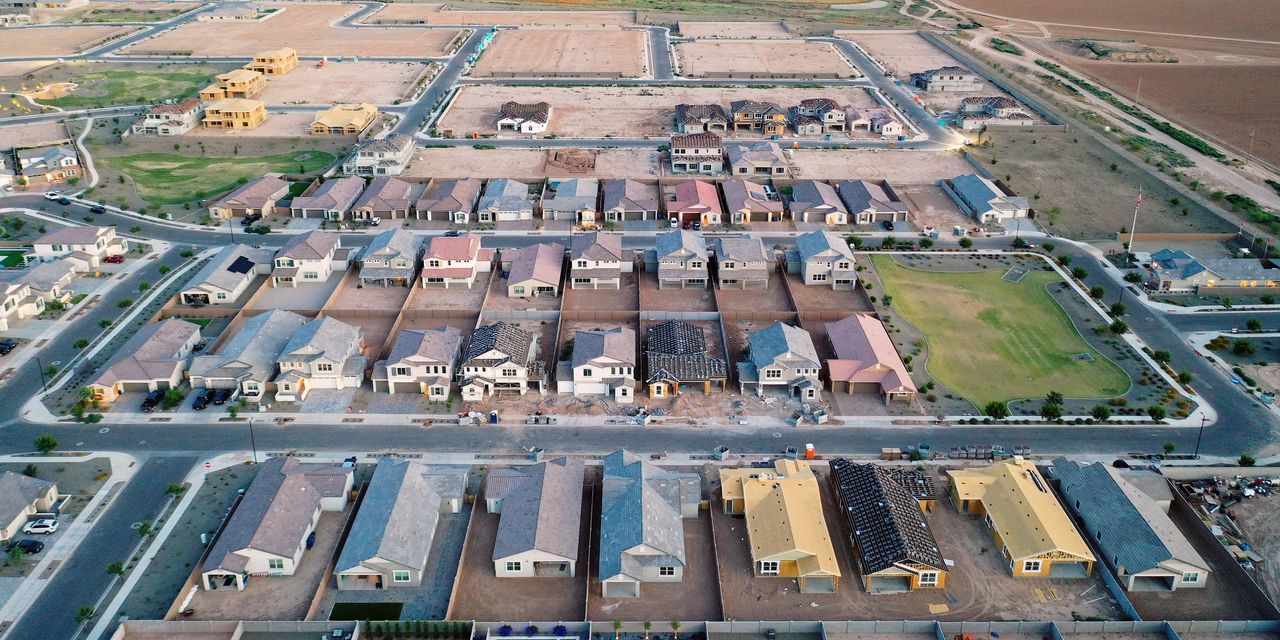Consumer prices inched higher in May, and once again the cost of shelter is to blame. But there is a silver lining.
The price of consumer goods and services advanced 0.1% in May from the prior month, and was up 4.0% from the year prior, according to the Bureau of Labor Statistics. The data illustrates a continued slowdown in the inflation metric, which declined more than
FactSet
consensus estimates had anticipated.
Gains in the cost of shelter were the largest contributor to the monthly increase, according to the data. The shelter subcomponent, a category that includes the cost of rent and lodging, has remained relatively hot, even as other measures of inflation have moderated.
The cost of shelter gained a seasonally-adjusted 0.6% in May from April, more than the 0.4% increase between April and March. On an unadjusted basis, the subcomponent was up 8% from the same month in 2022.
While the Consumer Price Index’s measure of shelter remains hot, both home and asking rent price gains have cooled after soaring earlier in the pandemic. Members of the Federal Reserve said during the Federal Open Market Committee’s May meeting that they expect housing inflation to have “about peaked” in the first quarter, according to meeting notes.
That could be why the persistence in shelter inflation didn’t seem to rattle market participants. The CME FedWatch Tool, which gauges the likelihood of target rate changes based on interest rate traders, pegged the probability for a pause in rate increases following Wednesday’s FOMC meeting at about 93%.
While housing cost gains remained high, shelter inflation has, at the very least, slowed from its earlier highs. The month-over-month change in shelter inflation was as high as a seasonally-adjusted 0.8% in December and February—readings that were, at the time, the largest gains since 1990. At 8%, shelter’s annual gain was the slowest since January.
May’s inflation reading shows that “rents are no longer accelerating,” National Association of Realtors Chief Economist Lawrence Yun said today in a statement. “This is expected given the robust construction of apartment buildings.”
Yun said he expects rent growth to continue to cool in the coming months. “This trend should help lower the broader CPI inflation to around 2% by the year end—the desired inflation sought by the Fed,” he said.
The Federal Open Market Committee said in May that “soft readings on rents for leases signed by new tenants were starting to feed into measured inflation,” according to the meeting notes. The members “expected that this process would continue and would help lead to a decline in housing services inflation over this year.”
To that end, the cooldown in asking rents continues. Rents measured by Zillow’s observed rent index in May were up about 4.8% from the year prior—the slowest such increase since April 2021.
A separate measure published
Redfin
last week found that asking rents fell roughly 1% from the year prior in May. Daryl Fairweather, Redfin’s chief economist, says she expects shelter inflation to decline through the next year as the cooldown in asking rents is factored into the inflation measure. Since the BLS’s gauge of shelter inflation is “stickier” than asking rents data, Fairweather says shelter CPI could cool even if asking rents begin to increase.
Write to Shaina Mishkin at [email protected]
Read the full article here



